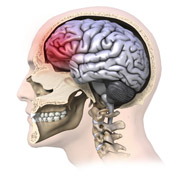Research and Innovation, UNL Office of

Center for Brain, Biology, and Behavior: Faculty Publications
Document Type
Article
Date of this Version
10-1-2023
Citation
Neuroimage. 2023 October 01; 279: 120314. doi:10.1016/j.neuroimage.2023.120314.
Abstract
Cortical task control networks, including the cingulo-opercular (CO) network play a key role in decision-making across a variety of functional domains. In particular, the CO network functions in a performance reporting capacity that supports successful task performance, especially in response to errors and ambiguity. In two studies testing the contribution of the CO network to ambiguity processing, we presented a valence bias task in which masked clearly and ambiguously valenced emotional expressions were slowly revealed over several seconds. This slow reveal task design provides a window into the decision-making mechanisms as they unfold over the course of a trial. In the main study, the slow reveal task was administered to 32 young adults in the fMRI environment and BOLD time courses were extracted from regions of interest in three control networks. In a follow-up study, the task was administered to a larger, online sample (n = 81) using a more extended slow reveal design with additional unmasking frames. Positive judgments of surprised faces were uniquely accompanied by slower response times and strong, late activation in the CO network. These results support the initial negativity hypothesis, which posits that the default response to ambiguity is negative and positive judgments are associated with a more effortful controlled process, and additionally suggest that this controlled process is mediated by the CO network. Moreover, ambiguous trials were characterized by a second CO response at the end of the trial, firmly placing CO function late in the decision-making process.
Included in
Behavior and Behavior Mechanisms Commons, Nervous System Commons, Other Analytical, Diagnostic and Therapeutic Techniques and Equipment Commons, Other Neuroscience and Neurobiology Commons, Other Psychiatry and Psychology Commons, Rehabilitation and Therapy Commons, Sports Sciences Commons


Comments
HHS Public Access.